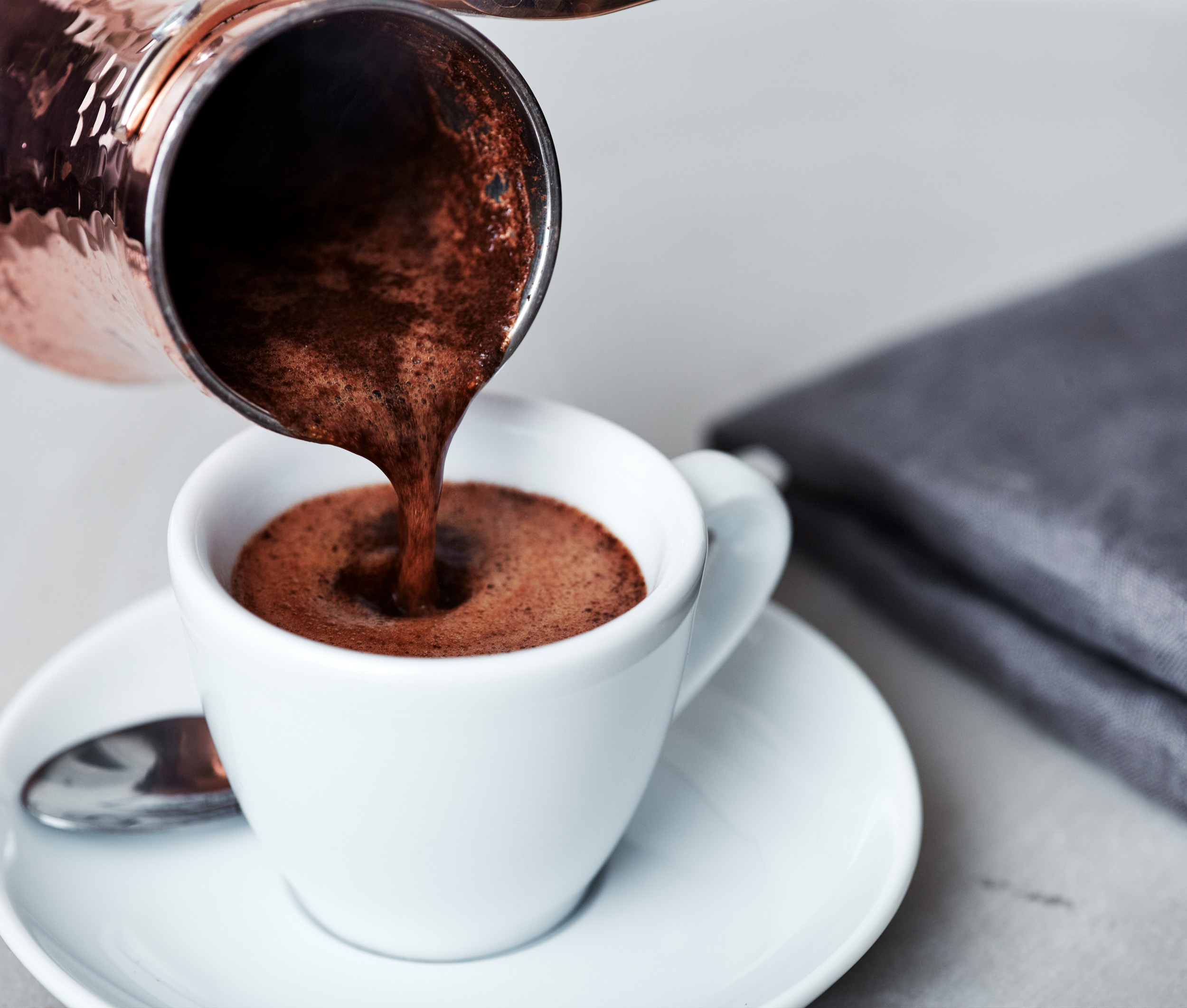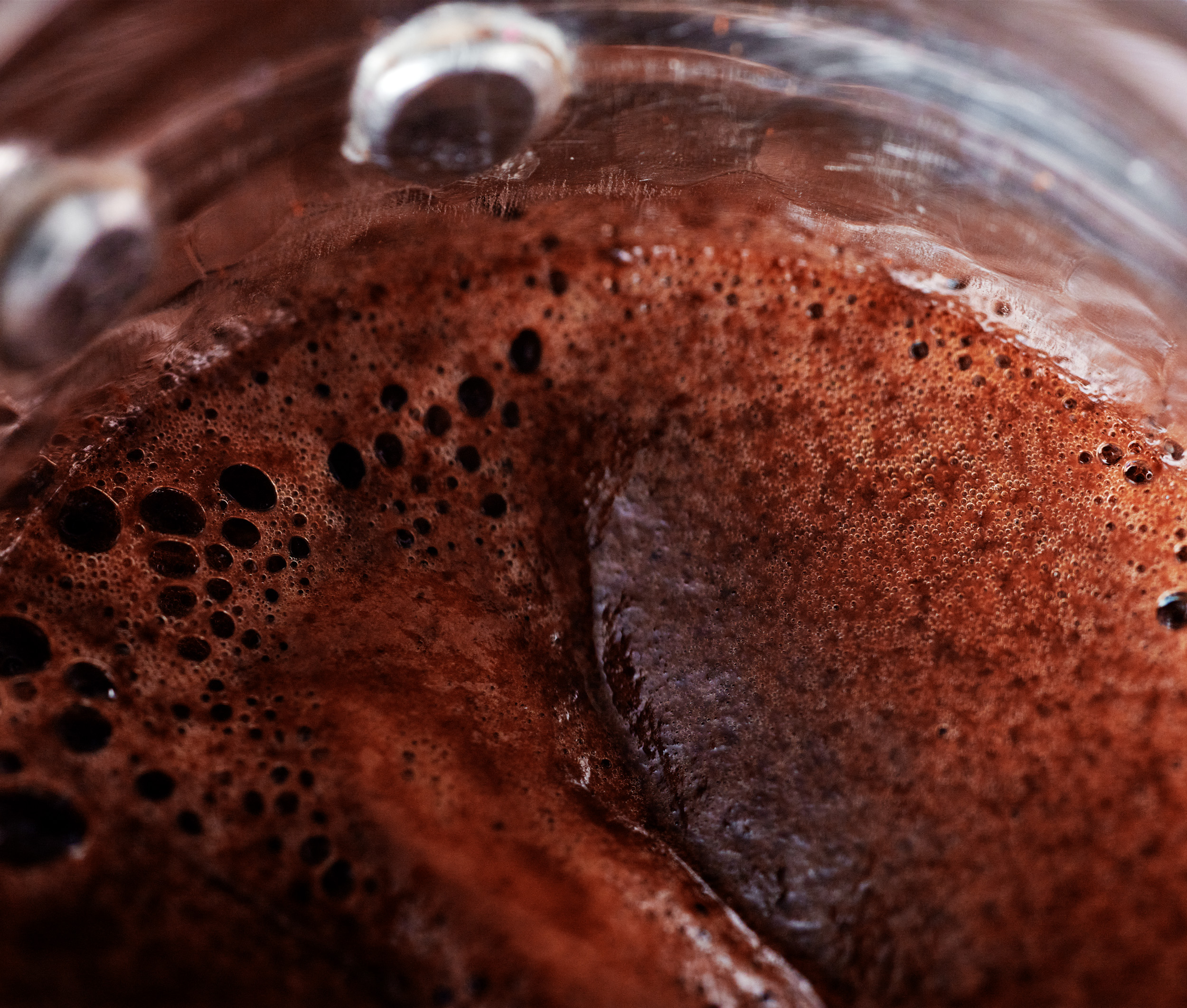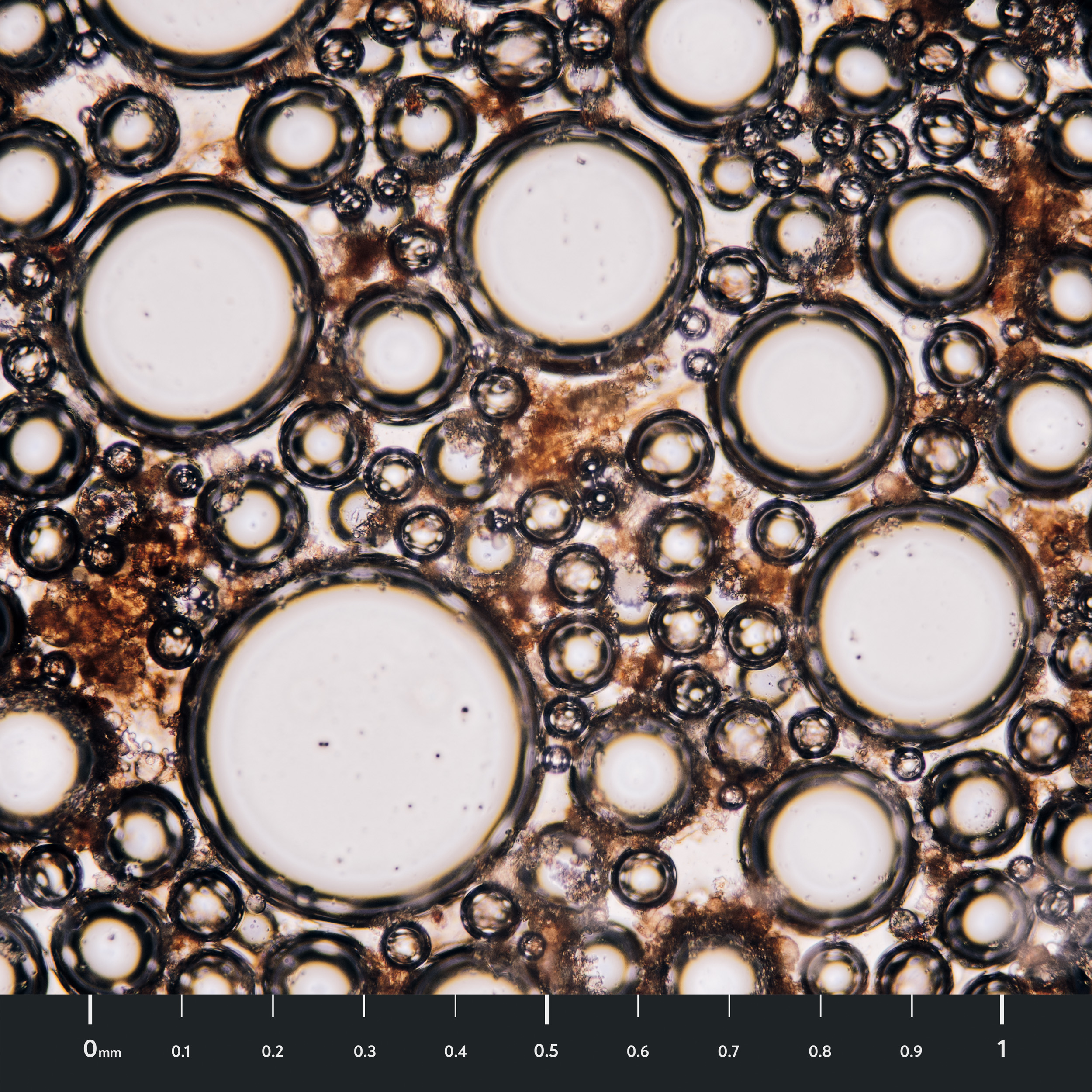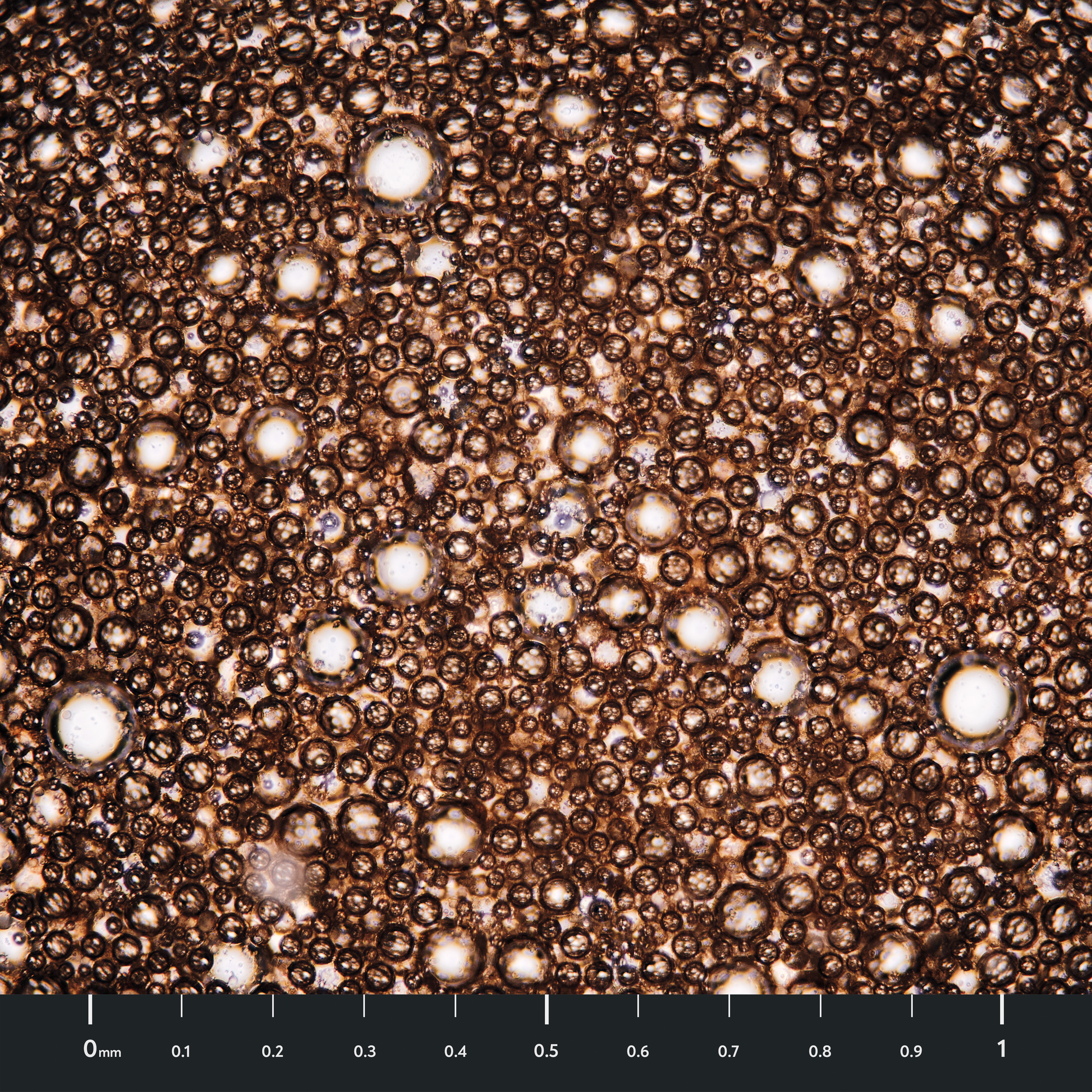الرغوة
الركوة is famous for the rich foam layer (‘raghweh’ in Arabic) that is produced during the brewing process. As the خليط القهوة temperature surpasses approximately 88°C, a thick layer of foam begins to form on the surface of the beverage. Comparing raghweh and crema under a microscope, we observed that the cell structure of raghweh tends to be a little larger than crema.
قد يتضاعف حجم خليط قهوة الركوة مؤقتًا أثناء تكوّن الرغوة. وعادةً ما تتيح الوصفات التقليدية لقهوة الركوة المجال للرغوة كي ترتفع إلى أسفل حافة الركوة. ثم يتم صب المشروب والرغوة والقهوة المطحونة معًا بسرعة في الكوب.
ارتفاع الرغوة في الركوة.
A safety warning: Extreme care and attention is required during the brewing process because if left unattended, a cezve خليط القهوة will boil over and can cause serious injury. We recommend you always use a thermometer when brewing cezve and in general, we advise you to decant your cezve into a cup before it reaches 93°C.
الرغوة والكريما. على اليسار: الركوة، على اليمين: الإسبريسو.
تم تكبير هاتين الشريحتين المجهريتين بمعدل 10 مرات، قارن بين رغوة قهوة الركوة وكريما الإسبريسو. تم ضغط عينات الرغوة بين شريحتين زجاجيتين للحصول على رغوة ثنائية الأبعاد وأكثر ثباتًا. تمكننا هذه الطريقة من تصوير الرغوات بتكبير عالٍ جدًا، ومقارنة الاختلافات النسبية في أحجام المسام.
معايير التقديم ودرجة حرارة لمشروبات عند تقديمها
After a cezve brew is decanted into a cup, the raghweh can be very persistent, sometimes lasting for several minutes. Like espresso crema, it usually breaks up enough to reveal the coffee beneath the foam layer after a couple of minutes. In the Cezve/Ibrik Championships, the scoring criteria for raghweh are almost identical to those for crema in the World Barista Championships.




